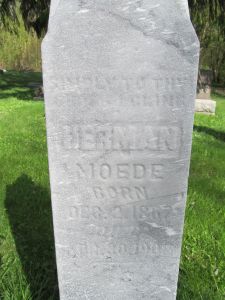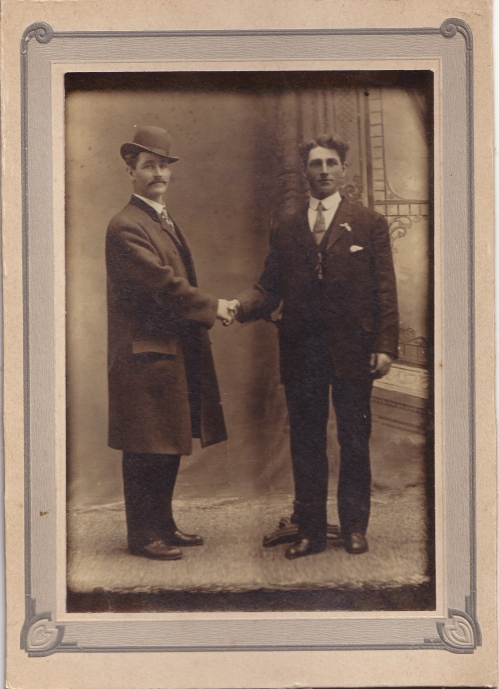Much of what I remember from past Memorial Days is my father talking about the loss of his childhood friend, Paul “Butch” Vanderboom in Vietnam. Paul’s family moved away from the neighborhood when they were still quite young, but he never forgot his friend. To the end of his days, he treasured a rubbing he received from a Vietnam vet of Paul’s name on the memorial wall in Washington DC. I posted a photo of them together on the virtual Vietnam Veterans memorial wall last year. I’d like to think my dad would be pleased to know it’s there.
But for this Memorial Day, I want to talk about a veteran who made a difference in my own life.
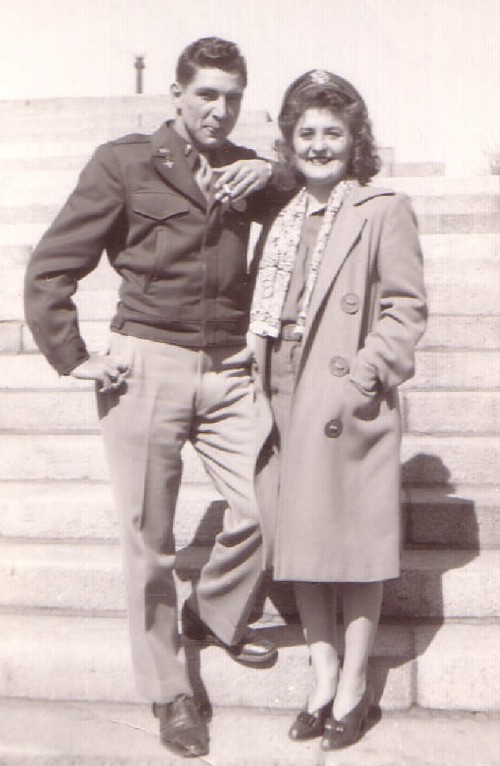 My grandparents Herb & Kay Pfaff in 1945
My grandparents Herb & Kay Pfaff in 1945
Sadly, I don’t remember my grandpa Pfaff ever talking about his wartime experiences. I was told that he had served in World War II, and have two vague memories about it: one, that our extended family once went to the EAA airfield in Oshkosh to see some vintage B-52 bombers, and my grandfather said he flew in planes like them; and two, that sometime during my childhood, my family gifted my grandfather with a very cool leather bomber jacket that they said was similar to the one he wore during the war. I remember my grandfather was really affected by that gift.
One lesson I’ve learned again and again about family tree research is that you have to be creative in searching for information. I lamented to my husband today about how little I knew about my grandfather’s service to his country, and how frustrating the lack of information I had found online. Both Ancestry.com and the NARA database had nothing listed for Herbert Pfaff. A fire in the National Military Personnel Records Center in 1973 means the records of many servicemen are not readily available online.
One option is to fill out a request form for his official military personnel file, but I don’t know enough at this point for researchers to locate his file among the millions of records stored there. As I told my husband, the little I know is that he must have been in the Air Force because I have photos of him in uniform. My husband asked if I was even sure of that much, at which point I showed him the photos, and the little wing medals on his lapels.
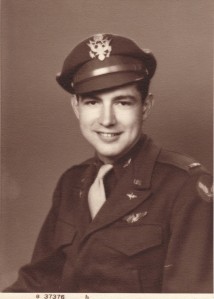
This is where my husband pointed out that I do have some clues in those photos. He suggested I do some research on what all those pins on his uniform mean. Some googling brought up a very informative website: American Military Patches, Other Insignia and Decorations of World War Two by Dr. Howard G. Lanham.
One disclaimer: I know very little about this topic, and there is a strong possibility that some or all of the information I’ve gleaned is inaccurate. Until I can gain better information, I’m taking all this with a grain of salt (and you should too)!
The first thing I learned was that the Air Force was not its own division until after World War II. I’m going under the assumption that my grandpa served with the USAAF (United States Army Air Forces). The easiest to identify from the website guide was the pin on his hat. It appears that there were different cap insignias for officers and enlisted men. Looking at reference photos, it appears that my grandfather was an officer! This was a surprise to me.
It’s always good to be cautious with assumptions, however. There is one other item that reinforces the idea that he was of officer rank – this photo to the right.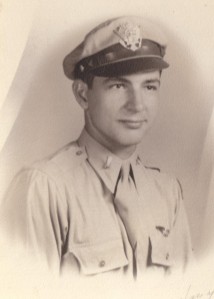 I always assumed this was taken early in his enlistment, because he was not wearing the full dress uniform of later pictures. However, I found mention of the fact that officers were issued different shirts than enlisted men, particularly in that the cloth “tab” on the shoulder that buttons to the collar is unique to an officer’s shirt.
I always assumed this was taken early in his enlistment, because he was not wearing the full dress uniform of later pictures. However, I found mention of the fact that officers were issued different shirts than enlisted men, particularly in that the cloth “tab” on the shoulder that buttons to the collar is unique to an officer’s shirt.
One other insignia pin provided more clues: the one on his left breast (top photo) appears to be a bombardier pin. Lack of detail in these old photos makes it hard to be certain, of course. Other patches and pins seem to denote that he was part of the general Armed Air Forces unit, and not a specific “sub-group”.
There are a few items I wasn’t able to properly I.D. – the rectangular bar pin in the photo to the right and a patch on his right sleeve in a later photo that was probably taken in Milwaukee circa 1945 (below left).
 There’s one thing I do know: Herbert Pfaff married Katherine Baker in 1941, and started a family a few years later. I presume he was still actively in the service for at least a few years after their first child was born, based on other photographs I have with him in uniform holding her.
There’s one thing I do know: Herbert Pfaff married Katherine Baker in 1941, and started a family a few years later. I presume he was still actively in the service for at least a few years after their first child was born, based on other photographs I have with him in uniform holding her.
These photos have a few other small clues on the back of them. While they are unfortunately undated, the photo above right is noted as having been taken in Tuscaloosa, Alabama. There is also a code written in: C-42514. Unfortunately I have no idea if that is a reference to his service, or simply some sort of filing system for the Olan Mills photo studio that processed that image.
One photo taken of Herb & Kay with their first daughter was placed as Ardmore, Oklahoma. And yet another image of the couple is marked “Topeka, KS – April 1945”.
To the best of my knowledge, after the war ended my grandfather returned to his family’s bakery business, which he was involved in until 1965 when his father passed away. He then worked for Crestwood Bakery until his retirement. Herbert Pfaff passed away on December 28, 1994 at the age of 73.
It is admittedly frustrating to know so little about such a significant time in my grandfather’s life… and indeed, a time that would likely have affected his entire family. I wonder about how hard it was for a young couple to start their lives during wartime, and how they both felt to be raising a family while living apart. Until I determine my grandfather’s dates and branch of service, I don’t know if I’ll have much more info about his experiences in the USAAF. But the little clues I’ve garnered today already make me feel closer to him, and honored to be a part of his family tree.
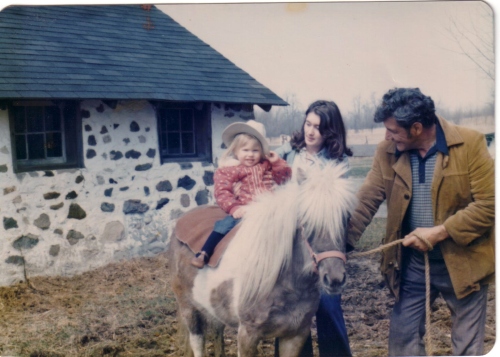 Grandpa Pfaff taking me on my first pony ride.
Grandpa Pfaff taking me on my first pony ride.








